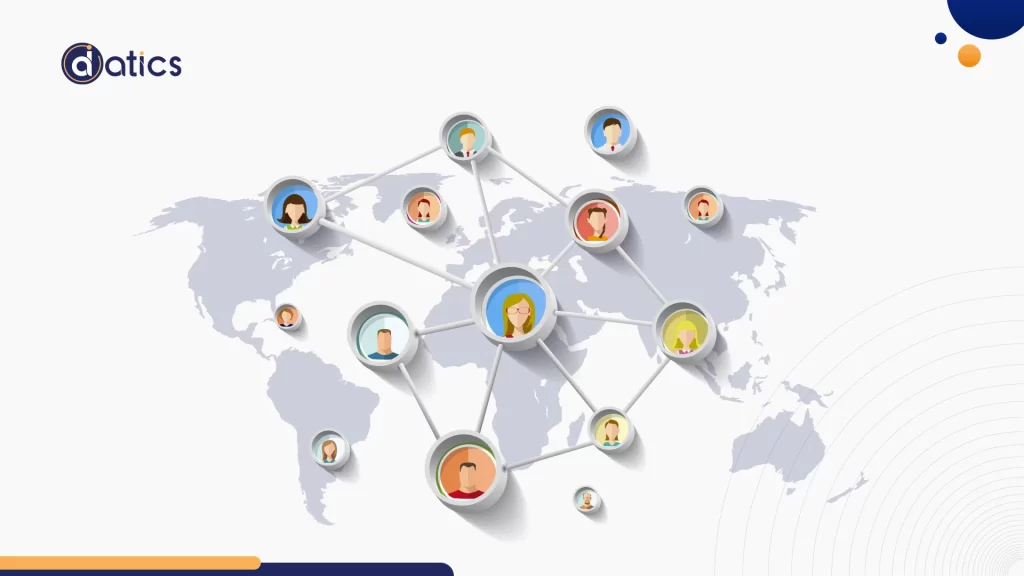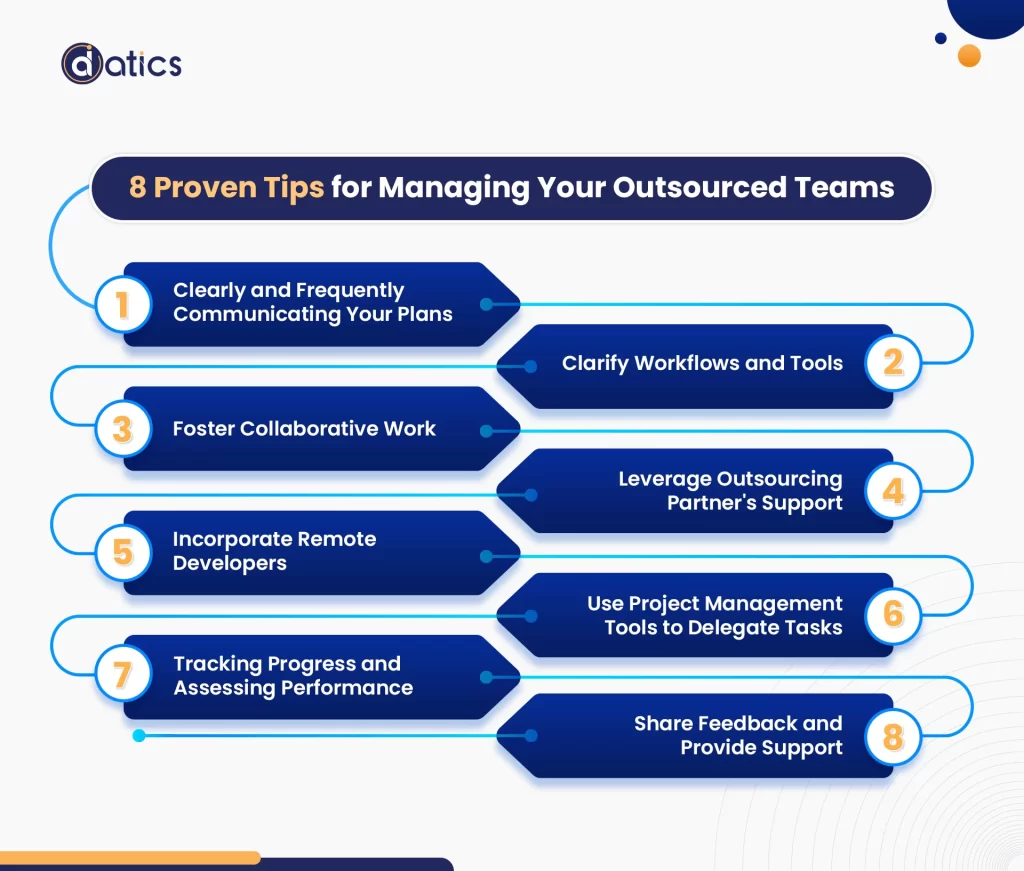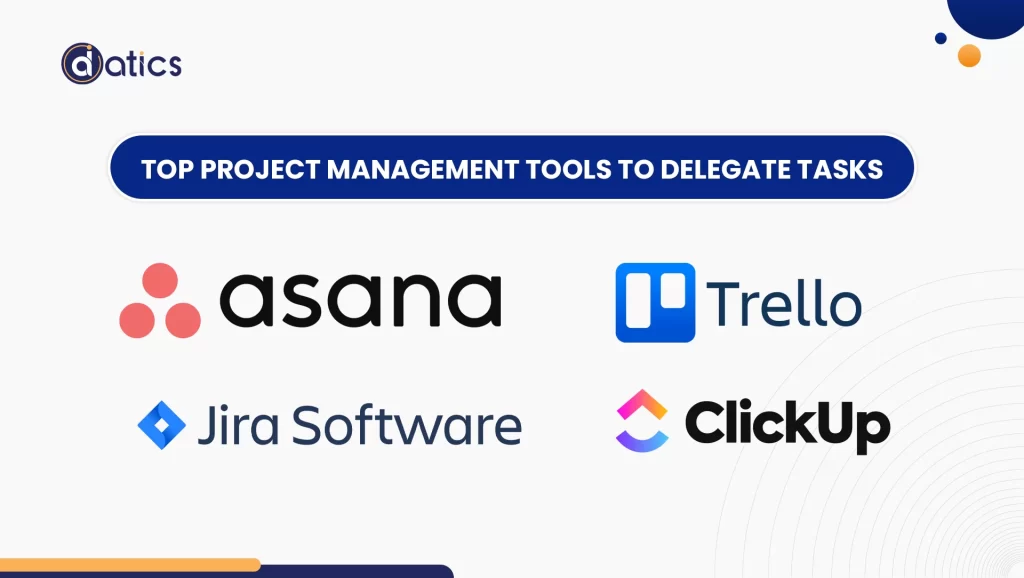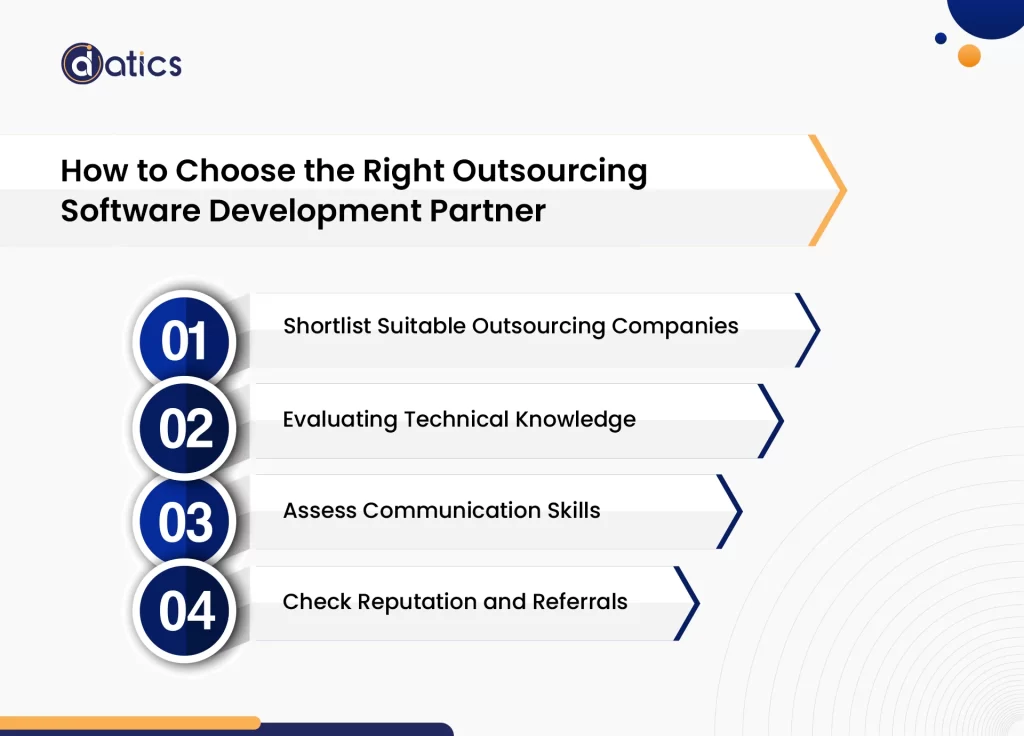
© 2024 | All Right Revered.
An in-depth guide on effectively managing outsourced software development teams.

Marketing & Outreach Associate
Fueling brand growth with a blend of creativity and strategy.

Collaborating with an outsourcing partner in software development offers cost efficiency, faster project timelines, and access to specialized skills, benefiting both startups and enterprises.
However, amid these gains, you may feel concerned about losing authority over your project.
How can you strike the right chord, maintaining supervision over your project while avoiding excessive micromanagement of the external outsourced software development team?
Navigating this fine line demands finesse, but it’s absolutely possible to steer your development team effectively without delving into the minutiae.
This comprehensive guide breaks down the complexities of outsourcing software development, enabling you to achieve success while nurturing a sense of autonomy within your outsourced software development team.
Before delving into your options for an IT outsourcing partner, it’s crucial to grasp the various outsourcing models available. At Datics AI, we focus on three primary IT outsourcing approaches:

Each approach has its advantages and drawbacks. The key is to select the one that aligns with your development needs for your outsourced software development team.
Based on our vast experience with software development outsourcing, we’ve noticed that blending multiple outsourcing strategies—creating a hybrid approach—often yields better results for businesses.
Below, we provide a brief overview of each software development outsourcing model and where it’s most suitable. This insight empowers you to make a well-informed decision tailored to your requirements.
The IT staff augmentation approach brings together external software developers and tech experts with the in-house team to accomplish projects seamlessly. This adaptable model focuses on offering the right skills through outsourced software development teams when needed.
When opting for staff augmentation, it’s crucial to ensure a match in culture and organization with the external team. This helps prevent conflicts between the in-house and outsourced teams. Collaboration is key, as the outsourced team joins forces with its in-house counterparts to achieve shared goals.
Peerlogic’s partnership with Datics AI exemplifies this collaboration, using staff augmentation to enhance their operations. They integrated our Pyhton engineers for backend development with their in-house team to meet high-quality standards.
Similarly, AMove adopted staff augmentation through Datics AI to tap into experienced professionals. They required assistance with quality assurance (QA), leading to the inclusion of skilled SQA engineers for tasks like performance, functional, and usability testing of their desktop application.
These examples highlight the benefits of IT outsourcing collaboration in advancing organizational goals.
For companies considering outsourcing their development teams, the dedicated team model offers an effective solution. This model forms independent expert teams, including project managers, software engineers, QA engineers, and other roles as needed.
These teams are overseen by a Scrum Master and the client’s in-house product owner. Despite their autonomy, they maintain open lines of communication, providing frequent updates on project progress.
Built on Agile methodologies, the dedicated team approach values your feedback, shaping the final product. It’s a balanced approach where your outsourced team handles the project based on your requirements, while you maintain oversight over the process and results through your in-house product owner.
Though less flexible than the staff augmentation model due to the pre-existing team structure, the dedicated model is suitable when you lack in-house expertise or a complete development team.
This allows you to focus on your core business activities while leveraging the capabilities of your outsourced software development team.
A real-life example is IDEEZA, which needed a skilled team to extend their backend development of printed circuit boards (PCB) using Generative AI. The team from Datics AI used a design-thinking approach to successfully complete this complex project.
For projects with clear requirements and goals, outsourced development services work best. These services offer specialized skills and extensive experience, working as a unified team with the necessary abilities for project completion—covering software engineering, UX design, deployment, and more.
This approach is beneficial for smaller in-house teams with clear project needs but lacking internal expertise. It offers a sustainable way to expand services and provide customized software solutions tailored to your specific requirements.
Datics AI collaborated with Coast Technology using this approach, co-creating various products for their clients. This included a Dealership Toolkit Portal (DTKP) using M1 Data and Analytics.
Additionally, projects like MyLotSpy and redesigning the UI and UX of a US county sheriff’s website were undertaken. These efforts streamlined operations and enhanced user experience of our clients, who benefitted from the outsourced development services.
At Datics AI, we have developed our expertise in resource outsourcing by cultivating successful partnerships with more than 30 clients worldwide, some of which have lasted more than three years and are still going strong.
Our journey has been a learning curve, a repository of insights that we’re sharing to simplify your experience in managing outsourced software development teams. These proven strategies are designed to empower you in managing outsourced software development teams:

The most important tool in the project management toolkit is effective communication.
While many stress communication, one aspect often gets overlooked: presenting the broad vision instead of focusing on short-term goals. Just like your in-house team, outsourced remote team members need a contextual backdrop. This approach helps ensure a shared understanding of project requirements and your expectations for outsourced team members.
Key ideas to communicate include:
In order to get everyone on the same page, communication must take place frequently and regularly. Involve outsourced developers in all communication channels, including daily meetings, standups, and beyond.
To synchronize efforts, it’s crucial to familiarize your outsourced team with all necessary internal tools and workflows that they’ll be using during their project:
When detailing your software development process, lean towards over-explanation. Even if the outsourced engineers are from nearby regions, assume there will be differences in the working styles between in-house and remote teams.
Outsourcing thrives on collaboration. The collaborative efforts of your in-house and remote teams accelerate the development and delivery of high-quality solutions, optimizing cost-efficiency.
Maximize the collaborative potential of outsourced teams by encouraging knowledge sharing during:
Develop a platform for shared learning resources, catering to both internal and external teams.
Several software development outsourcing companies extend support services to enhance your collaboration, amplifying business growth.
For instance, at Datics AI, our dedicated project managers facilitate seamless communication, gather remote team feedback, and more. If your service provider offers similar services, capitalize on them to nurture a productive, mutually beneficial partnership with your outsourced developers.
Treat your outsourced remote team as an integral part of your in-house workforce. This approach will help you:
These strategic steps will improve your collaboration with remote and outsourced team members while also strengthening their technical capabilities, ultimately aiding the software development process.
Managing outsourced software projects demands precision in task delegation, vigilant progress tracking, strategic deadline setting, adeptly handling time zone disparities, and seamless virtual meetings for your outsourced software development team.
To navigate these challenges, an array of user-friendly project management software tools stands ready to assist. Below are some of the most widely utilized options:

ClickUp is a versatile project management solution that combines customizable views, task assignments, goal tracking, and document collaboration. Its adaptable interface caters to various project methodologies and communication styles.
Jira is a widely used tool, especially in software development, offering robust features for task tracking, issue management, and agile project management. Its customizable workflow and integration capabilities make it a go-to choice for teams working on complex projects.
Trello offers an intuitive Kanban-based approach to project management. Users can craft themed boards and tasks, visually tracking progress by moving cards across lists. Collaborators, including project managers, can seamlessly add team members, assign due dates, attach files, and engage in discussions.
Asana provides an easy-to-use project management platform that aligns well with outsourced project needs. It empowers users to create tasks and subtasks, monitor task execution, delegate assignments, and attach necessary files.
Consistently keeping an eye on project progress and team performance is vital throughout the project. This ensures that everything is on track and any issues are caught early.
It’s important to monitor both individual team members and the overall performance of the outsourced software development team.
To do this, use project management tools like Kanban boards. These tools help visualize task progress and who’s responsible for each part of the project. Alongside these tools, have regular updates, meetings, and check-ins to stay informed.
Effective management of outsourced development teams extends beyond issue resolution. It entails offering timely feedback and unwavering support to both the external and internal teams.
Take a proactive approach by providing constructive feedback to individual team members on the outsourced software development team. This involves not only recognizing their strengths but also offering valuable insights for improvement. This process cultivates a culture of continuous learning and personal development, benefiting the entire team.
Equally important is making yourself accessible for assistance. Clearly communicate your willingness to address questions and address concerns.
By fostering an environment of open communication and support, you inspire others to follow suit. This endeavor aims to fortify team dynamics, creating an atmosphere where everyone feels encouraged to voice their thoughts candidly.
When embarking on your software product development journey, the initial step after shaping your business plan is to build a development team. Assembling a team for your tech product might seem daunting, but the good news is that you don’t have to do it alone.
The key lies in making a smart decision by selecting the right outsourcing partner tailored to your needs.
For businesses and entrepreneurs exploring the outsourcing landscape, here are some insights to help you identify a capable, experienced, and reliable outsourcing partner to meet your technology requirements.
This guidance ensures that your outsourcing journey effectively addresses your challenges and goals, setting your project on a path to success

Leverage your professional connections and online platforms such as LinkedIn, Clutch, and Glassdoor to shortlist your options and select 5–10 outsourcing companies that seem fitting.
The main elements to consider encompass relevant industry exposure, documented case studies or success ratios, and the company’ accomplishments or awards.
During the evaluation of an outsourcing partner, the foremost step is assessing the depth of technical proficiency within their software development team. This aspect holds great significance throughout the development process.
To gauge the technical competence of the potential outsourcing partner, initiate interviews, analyze portfolios, and request case studies to examine their past work as a service provider.
It’s worth noting that at Datics AI, a meticulous evaluation process is put in place, handpicking the crème de la crème of tech talent—the top 3% who align precisely with your requisites.
In any organization, effective communication is the backbone of seamless and productive operations. When evaluating your partner’s communication capabilities, consider factors such as:
An upfront dialogue about these aspects ensures unanimity from the very start and helps future collaboration.
When considering potential outsourcing partners, it’s essential to thoroughly evaluate their reputation and industry-specific expertise. Start by exploring online reviews and ratings that provide insights into their past performance and client satisfaction.
Additionally, seek out referrals from trusted sources or ask the outsourcing provider for references from their previous clients. Engaging in direct conversations with these clients can offer valuable perspectives on the provider’s strengths, weaknesses, and their ability to meet sector-specific demands.
By gathering a well-rounded view of their track record and capabilities, you can make a more informed decision and confidently move forward with a partner that aligns with your needs.
With an active presence since 2018, we’ve amassed five years of experience in diverse industries. Our track record includes successfully delivering over 50 projects spanning Fintech, Hardware Equipment, Automobiles, Sales, Marketing, Fitness, and Cloud Management.
This breadth of experience equips us to understand your unique project requirements and tailor solutions accordingly.
Share the details of your project – like scope, timeframe, or business challenges. Our team will carefully review them and get back to you with the next steps!

© 2024 | All Right Revered.
This guide is your roadmap to success! We’ll walk you, step-by-step, through the process of transforming your vision into a project with a clear purpose, target audience, and winning features.